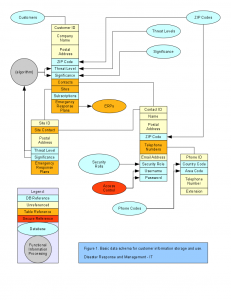Social media has blossomed in the past few years beyond what many could have imagined. Today, it seems that many people engage others on the internet and social media without regard to their own personal privacy. Additionally, according to Jones and Behling (2010), privacy settings within social media applications tend to be complex, which inhibits their effective use by privacy-minded users. The result is an open and rich source of personal data, the problem of which is context.
I view social media as personal advertising where, unless specifically stated in the terms of service, the information posted by others is considered to have entered the public domain; others may view social media in the light of property rights where, although many people might not lock their front door, the invitation to invade the space is not assumed (Rosen, 2009). Regardless of personal views, information seekers need to be mindful of three things: 1) the terms of service for using the application resources, 2) the privacy policy in effect for using the application resources, and 3) the context of entries and the audience each entry is meant to reach (Jones & Behling, 2010; Rosen, 2009). Considering that the personal data made available on social media applications is not typical of allowable employment interview scenarios, employers need to be mindful that searching out this information may lead to unethical and illegal hiring practices (Fallon & McConnell, 2007; Jones & Behling, 2010; Rosen, 2009). Still, employers use social media to further vet applicants (Jones & Behling, 2010). Another consideration along similar lines is the use of generic web-based searches that could uncover similar information (Rosen, 2009).
In the case study provided by Coutu (2007), Virginia performed an internet search on Mimi and know suffers the problem that one cannot unknow knowledge. Additionally, Virginia know feels ethically compelled to share this information with Fred, the CEO. While this information would not be pertinent in the hiring process of a line employee, staff employees require more scrutiny, especially those that are being vetted for significant leadership positions. Rosen (2009) states, “employers do have broader discretion if such behavior would damage a company, hurt business interests, or be inconsistent with business needs” (para. 15). With this in mind, I tend to consider the paradigm of privacy practices when confronted with public officials and celebrities. A public head of a company or division might not have the same expectations of privacy afforded to a typical job applicant, but this would be a question for lawyers, as Mimi alludes to in the case study.
Basing the decision to investigate Mimi via Google on the general welfare of the organization, I would recommend allowing Mimi to defend her position in order to minimize bias and assumption. Two questions could be asked of Mimi that may allow her to mitigate concerns stemming from the search: 1) Regardless of any past pretenses, do you feel that you can represent this company appropriately if faced with issues regarding international politics? 2) Do you have any concerns about operating effectively within a political environment, such as China? Asking these questions, however, assume that the legal ramifications have been assessed and that they have been deemed appropriate for these particular circumstances. Ultimately, however, the decision lies with Fred to formulate a team that he feels can further the goals of the organization. He may consider the search results inconsequential and hire Mimi regardless of these findings, which would also be appropriate.
References
Coutu, D. (2007). We Googled you. Harvard Business Review, 85(6), 37-41.
Fallon, L. F. & McConnell, C. R. (2007). Human resource management in health care: principles and practice. Sudbury, MA: Jones & Bartlett.
Jones, C. & Behling, S. (2010). Uncharted waters: Using social networks in hiring decisions. Issues in Information Systems, 11(1), 589-595.
Rosen, L. (2009, September 15). Caution! – Using search engines, MySpace or Facebook for hiring decisions may be hazardous to your business. Retrieved from http://www.esrcheck.com/articles/Caution-Using-Search-Engines-MySpace-or-Facebook-for-Hiring-Decisions-May-Be-Hazardous-to-Your-Business.php


